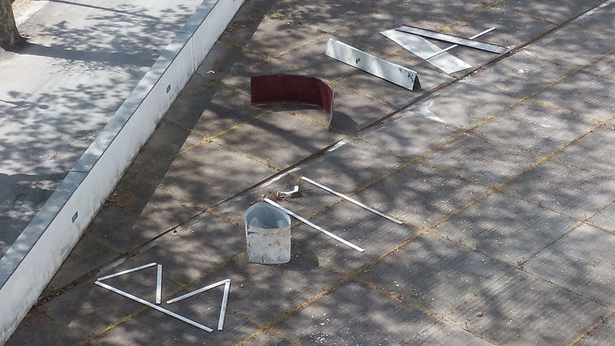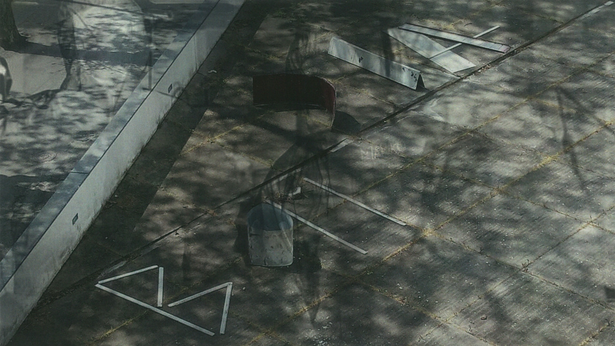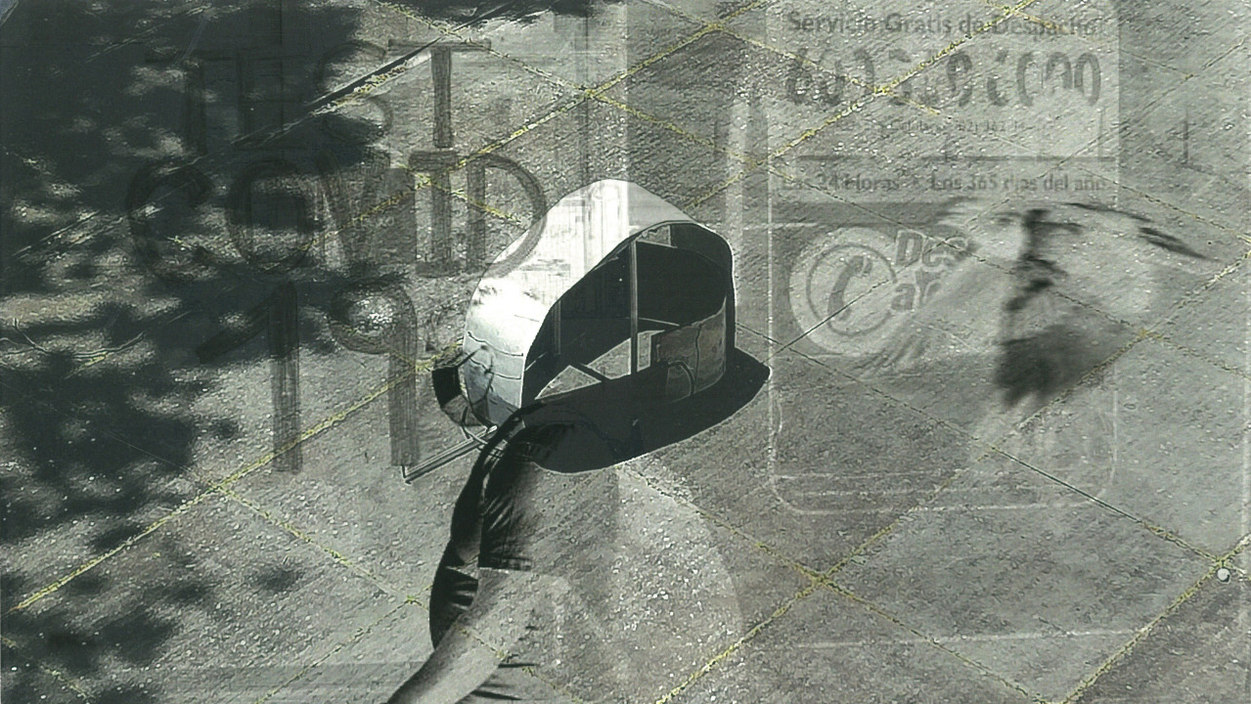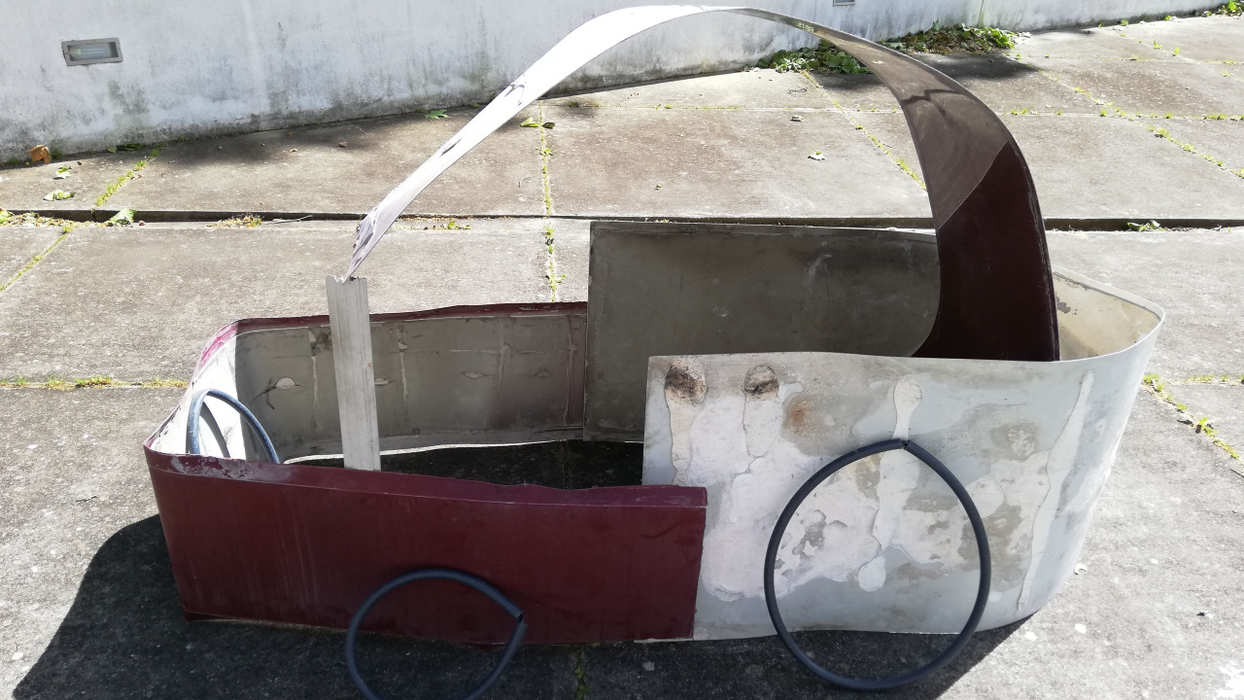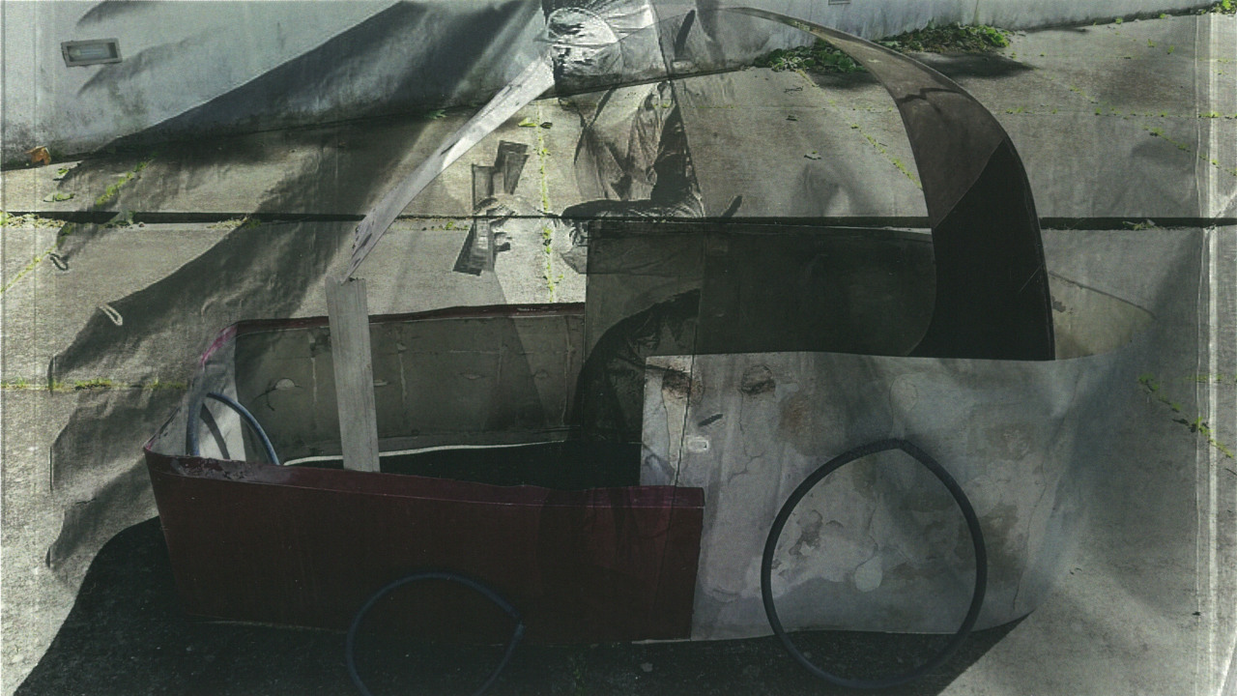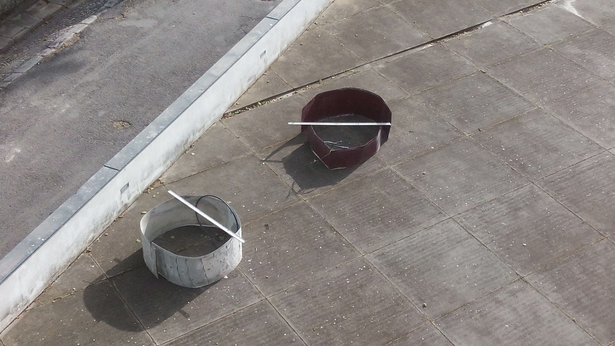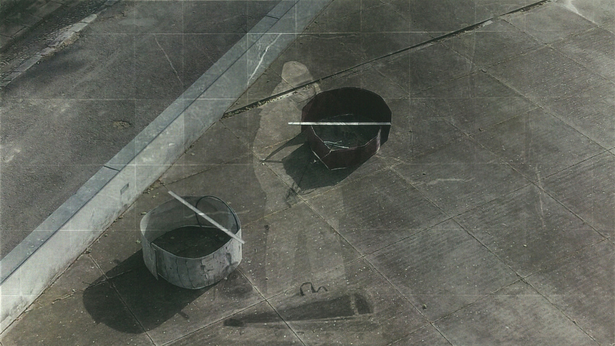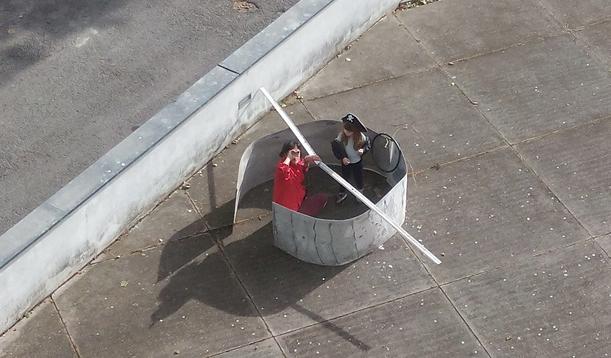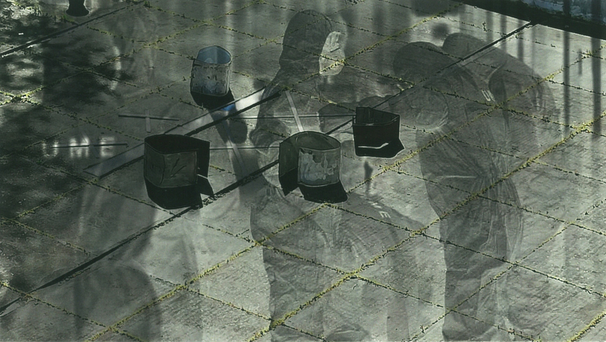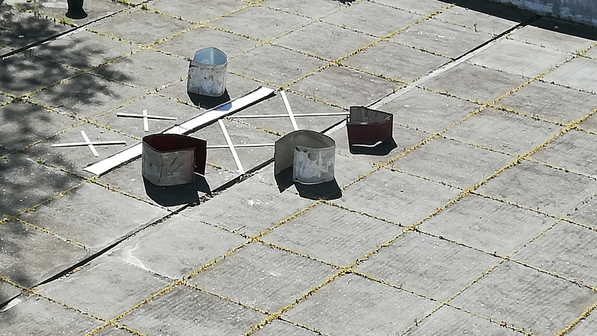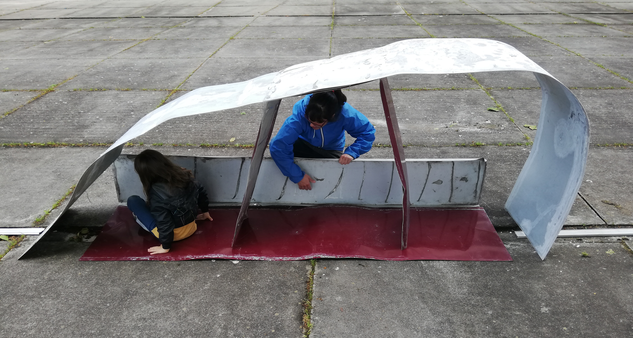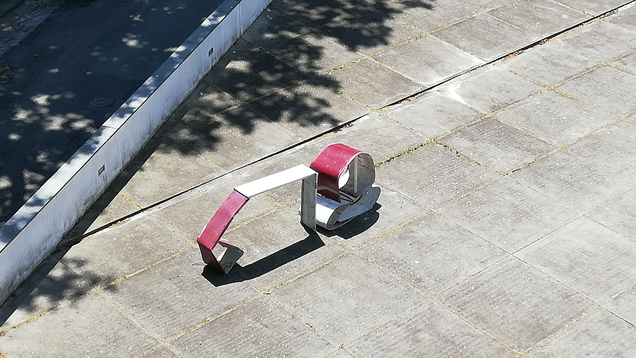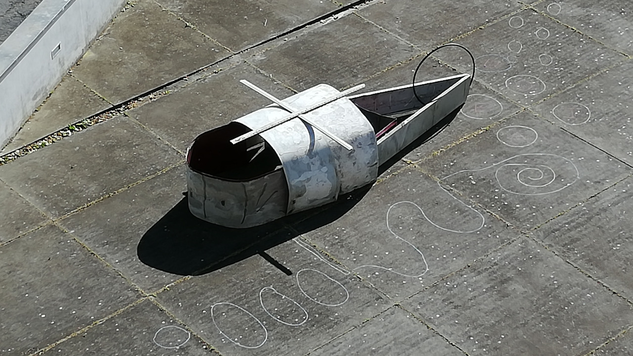Introduction
Investigating arts from artistic practice (practical-theoretical typology) as affirms José Quaresma at ‘Research in Arts, The Oscillation of the Methods’, is assuming the “ambivalence of the methods that accompany these research modalities that interconnect artistic work, aesthetic pleasure and argumentation” 1 (Quaresma, 2015:142)
This kind of approach has the advantage of questioning from reality and gives us the thoughts behind the objects that stimulate the fields of investigation.
In general artistic projects are created with the willingness to communicate, which is expressed in different forms, depending on the artist's own intentions. Communication is one of the most important aspects of a work, in the sense that it is in the confrontation with the other that the work is fully realised. However, communication itself is not always the origin, objective or even the sole result of a work.
The project ‘matéria disponível’ (2020), that we intend to analyse here, questions the connections between people and their surroundings and investigates the importance of the community.
Previous to CoVID-19, the sense of distance between people was completely different. The presence, the touch and the greeting between them were part of an unconscious attitude that relied more on cultural than on rational issues. In the first lock-down (march-june 2020), the surrounding was no longer a neighbourhood, smiles were no longer seen, good morning wishes became residual, the “correct” took new definitions, distance as a rule seemed to be the greatest shift. People acquired new spots of emptiness, new bounds and limitations, which contrasted with what surrounded them when we (used to) live as a community.
Under the obligation to stay at home but, on the other hand, feeling the need to make this stay more fun and feasible, the courtyard of the building, where mother and daughter lived, was the sole escape. There, detached elements from the building’s facade, left abandoned and forgotten, allowed construction of playground games between mother and daughter, but also messages with and for the other residents. This space, which was previously only used on a few weekends and in social gatherings with friends, was now used daily, as a synonym of pause and relaxation.
The communication intent in 'matéria disponível’ (‘available matter’)
The goal of communicating underlined ‘matéria disponível’ ever since its conception, up to recording and exhibition. It allows us to see how objects and artistic practices promote changes in the atmosphere of a place, trigger memory, generate dialogues and mitigate barriers.
‘matéria disponível’ emerged in a time when city life seemed to make no sense. The emergence of CoVID-19 forced physical isolation and revealed the importance of the outdoors in people's lives. Daily gestures that were previously devalued, because they seemed taken for granted, such as simply being together, having a coffee or attending a live concert, became essential objectives to recover. The living spaces started to show their fragility, the streets were empty, the shops closed and the cities restricted life to the inside of each own household. In this situation an apartment seemed clearly insufficient to manage an endless day-to-day life. Size and lack of outdoor spaces contributed to this tension, fragility and insufficiency. Therefore, during this period, the common areas of the building where mother and daughter lived, the courtyard, gained a new value and meaning based on contact. This new space where life and activities could take place was a large space made of concrete, which had a sporadic use by the residents, but gained importance as an escaping space during this period. An escape not in the solitary sense, but precisely in the opposite, in the sense of sharing and interaction with others.
The courtyard became the space and the context where it was possible to establish messages with the neighbours. Due to its privileged location, by being at a lower level, all the balconies and windows could set visual contact and allowed other kinds of interactions such as brief conversations. Moreover, the space had the particularity of having abandoned remains of the building's facade itself such as metallic sheets and traces of blinds. These abandoned remains made possible, at a distance, the creation of legible shapes and interaction messages.
The third, 'means of transport', allowed family games through hypothetical changes of place and the interest of the other residents by watching and sharing moments of their own childhood memories. Representing objects as boat, helicopter, aircraft, car, caravan, subway, excavator, trailer, truck and motorbike, stimulated memories and fed expectations. The objects created acted as stimulation tools, even if at a distance, because they used common objects and community knowledge. The spectators started to give their opinion, to guess the shape and not always agreed with what was proposed. They could be conceived as active interpreters that Jacques Rancière mentions in “The Emancipated Spectator” (2010) in the sense that they were not limited to watch, they appropriated objects, interpreted shapes, shared memories and promoted dialogues.
The interaction established with the neighbours by the time this work was conceived, highlights the communicating side of the objects, their ability to create atmospheres of communion, contact and sharing.
The three moments of interaction ended up working in a complementary way. The first, ‘dia bom’, marked the field of action and allowed the kickstart of a dialogue with the other residents. The second, the 'noughts and crosses', due to the failure of creating proximity, ended up showing the importance of exploring the visual dialogue and the idea of travelling. The third, 'means of transport', started to explore other possibilities of travel, using imagination and memory.
The suggested proximity and the allusion to childhood of the objects created in ‘matéria disponível' transformed the isolated atmosphere of the place particularly enforced by the context. This framework takes us to ‘Surround Me’ (2010) by Susan Philipsz. In it, Philipsz filled different spaces within the Square Line in London with a sonic constellation, during several weekends. This area of the city, defined by a daily frenzy of commerce and traffic during weekdays, on weekends was marked by silence, only broken by the occasional noise of cars and church bells. In these moments of silence, Philipsz's voice resounded, with arrangements taken from popular English songs from the late 16th and early 17th centuries, through the streets, bringing the place closer to collective memory and inviting the pedestrian to inhabit/enjoy this part of the city.
Also in ‘matéria disponível’, the atmosphere of the place is changed by the ability, not of the sound but, of the objects to establish memory relationships with the spectator. The suggested proximity and the allusion to childhood altered the isolated atmosphere of the place as it was lived in that context.
However, at that time, as a physical project, this work was limited to the timely record of the objects produced and the sole materials which they were composed from. In these recordings the general isolation that was experienced in that period did not show up. As being the result of these positive moments of connection, these recordings miss visual context to the isolation that motivated the work.
During this period, in Portugal, the communication by the media was the closest link to external life. Information transmitted by television, audio or digital channels gained importance in people's lives and focused on the response of healthcare systems to the high number of people in intensive care and the worldwide spread of the CoVID-19 virus. With the intention of later being able to exhibit the images produced and to continue to establish dialogues and relations, the option was to link this recording to the media images, published on 'Euronews'. The confrontation of these two realities resulted in the overlapping of photographs with the same date. The colour photographs, produced in the building's courtyard with the remains of the facade, were overlapped on black and white negative images of media photographs taken from ‘Euronews’ on that same day.
The presence of media images gave the work the dimension of time and common memory. The final compositions confront everyone's reaction to solitude, such as our sharing at the courtyard, with the worldwide cause behind it and, therefore, suggest acrossing and transversality of experiences. It is this “collective memory” that allows these images to be understood, in the sense that it motivates the individual's association with their own lived moment.
In the courtyard’s “playground” the creation of different objects filled the mother-daughter plays in some mornings or afternoons, and always remained until each evening, hoping to raise curiosity and contact with the neighbours. During 4 months, three different interactions were distinguished. The first consisted in the drawing of the words 'dia' (day) and 'bom' (good). The unexpectedness of this message and the similarity of isolation among all the residents, favoured the reaction of enthusiasm and receptivity. The observers started to comment and to exchange salutations. An attitude that seemed to allow the continuation of this type of communication. The second, the 'noughts and crosses', intended to attract the attention, and perhaps the interaction, of the neighbours in different moments of a day, but these never happened. Probably, due to the fact that the pieces were large, uncomfortable to move, and made by crude materials without design. On the other hand, for a 5-year-old child, the size of the game allowed the body itself to be a piece and the shape of the objects allowed hiding places. In any case, the interactive failure with the neighbours gave rise to work with memory and imagination based on the idea of transportation.
Conclusion
It is the proximity to everyday life that this work seeks to explore and is also this same continuity that is intended with its analysis. The aim is, therefore, to establish a reflection that focuses on conception/production to systematise concepts and language devices that favour sharing and debate.
In ‘matéria disponível’, the idea, form and content are created with the desire to establish proximity with the viewer during conception, recording and exhibition. This intention started by exploring the capacity of the objects to change the atmosphere of the circumstance experienced during the first lock-down, in this small community. Then, it developed the concept of confrontation between common and individual memory, through the overlapping images from the courtyard and the 'Euronews' photographs. The presence of the building's facade elements in the first exhibition reinforces the relationship of proximity with the observer by promoting the understanding of the work’s scale, as well as the postcards, which accentuates the sense of communication.
With this project, the result reinforced a way of communicating, touching, raising awareness and breaking physical limits. It emerged from the impulse to establish communication and reinforces the importance of the relationship with the other for the structuring of the artistic thought. Finally, it deals with memory, imagination, fantasy and also with the invisible threat, wishing that after the confrontation with the work, something subsists in the person.
Notes:
1. “a ambivalência dos métodos que acompanham estas modalidades de investigação que interligam trabalhos artísticos, prazer estético e argumentação”: free translation by the author
Bibliographical references:
BBC London (2010, 8 October). Sound artist Susan Philipsz unveils City song project. Link
BERGER, John; BLOMBERG, Sven; FOX, Chris; DIBB, Michael; HOLLIS, Richard (2002). Modos de Ver. Edições 70.
QUARESMA, José (2015) A produção artística como investigação. Exigências em torno de uma tipologia radical de Art Based Research. In F. DIAS, J. QUARESMA (Eds.), Investigação em Artes, A Oscilação dos Métodos (141-154). Edição do Centro de Filosofia - Faculdade de Letras da Universidade de Lisboa.
RANCIÈRE, Jacques (2010). O Espectador Emancipado, Orfeu Negro.
John Berger in 'Ways of Seeing' (2002) talks about the ability of a produced image to combine our sight with those of the other, in the sense that, after acquiring the faculty of seeing, we realise that we can also be seen. This awareness allows us to communicate, establish relationships and enhance intentions. In ‘matéria disponível’, the consciousness of being seen is metaphorically given from media images. These images are the ones that situate the time of action and grant the relationship with parallel memories of the personal experiences. On the other hand, the objects in the courtyard represent these individual memories, atmospheres and imaginaries.
To enhance the viewer's relationship with the work, the first public exhibition at ‘Macaréu, Culture Association’ combined the projection of the different images produced with the physical presence of the building's facade elements, which were abandoned under the balconies. The distribution of these elements throughout the exhibition space allowed the observer to confront and relate with the objects, intensifying his involvement in the atmosphere of the projections and in the scale of the place where they happened. In the projected images the objects are isolated and compose the understanding of their own scale.
In ‘matéria disponível’, the intention to communicate was present from the beginning, with the dialogue established through objects with neighbours. It was also the basis of all other decisions, including the presence of the building's facade elements at the first exhibition and the sets of pre-edited 15 postcards being placed and sold at this exhibition site. The postcards recorded all the overlapping images produced and symbolise the need of the project/human being to keep communicating.
